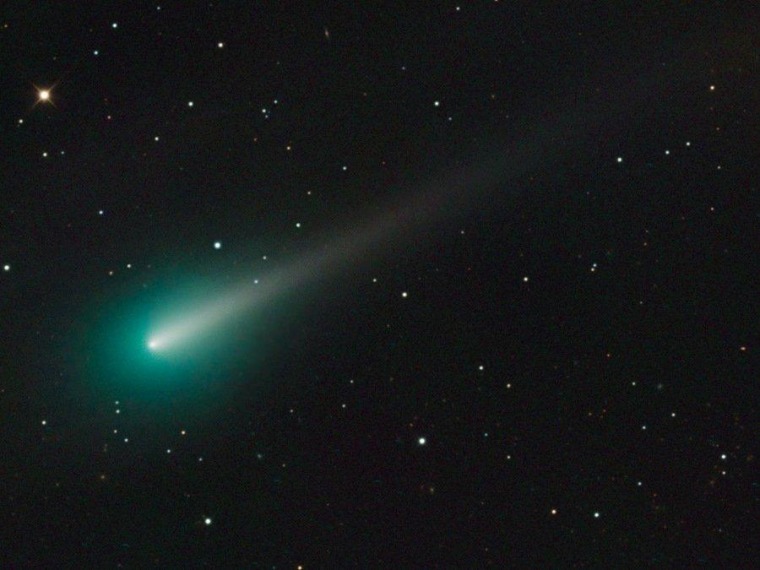It's not at all clear whether Comet ISON will become "the comet of the century," as skywatchers hoped a year ago, but it's certainly become a beautiful sight for photographers with the right kind of telescope.
Adam Block captured a stunner on Tuesday morning, just before sunrise, using the 0.8-meter Schulman Telescope at the University of Arizona's SkyCenter atop Mount Lemmon. Block's picture reveals ISON's greenish coma, trailed by a long, straight tail. The comet is zooming within the orbit of Mars, heading toward a crucial rendezvous with the sun on Nov. 28.
"I am certain more images of this will be coming out shortly as it increases in brightness during its dive toward the sun," Block wrote in an email. "Here is hoping it survives that rendezvous and emerges as something spectacular on the other side! Although its future is questionable ... being prepared is always a sure thing to take advantage of quickly changing conditions."
Austrian astrophotographer Michael Jäger also captured a green-tinted glimpse of the comet.
"ISON's green color comes from the gases surrounding its icy nucleus," SpaceWeather.com's Tony Phillips wrote. "Jets spewing from the comet's core probably contain cyanogen (CN: a poisonous gas found in many comets) and diatomic carbon (C2). Both substances glow green when illuminated by sunlight in the near-vacuum of space."
The comet is still too dim to see with the naked eye, but if you have the right kind of telescope, Phillips says you can see it rising alongside Mars in the eastern sky, just before dawn. SpaceWeather.com provides the coordinates and additional viewing suggestions.
Some astronomers say there's a good chance that ISON will fizzle out. But if it doesn't break apart and survives its 724,000-mile (1.16 million-kilometer) solar encounter, it just might meet Block's expectations. Calling it the comet of the century is probably too presumptuous — but "comet of the year"? Maybe. Stay tuned.

Update for 2:30 p.m. ET Oct. 9: Simulations conducted by scientists at the Lowell Observatory and Southwest Research Institute suggest that Comet ISON will survive its encounter with the sun — which would be good news for skywatchers.
The biggest caveat is that ISON would get into trouble if solar heating caused it to expel unexpectedly violent jets of gas and spin up its rotation. That could cause the comet to lose mass more quickly. "Whether or not disruption occurs, the largest remnant must be big enough to survive subsequent mass loss due to evaporation for ISON to remain a viable comet well after perihelion," Lowell research scientist Matthew Knight said in an SwRI news release.
The study, "Will Comet ISON (C/2012 S1) Survive Perhelion," was done by Knight and SwRI's Kevin Walsh, and has been accepted for publication in Astrophysical Journal Letters.
More about Comet ISON:
- Amateur astronomers snap ISON's picture
- It could still be the comet of the century ... or not
- NBC News archive on Comet ISON
Alan Boyle is NBCNews.com's science editor. Connect with the Cosmic Log community by "liking" the NBC News Science Facebook page, following @b0yle on Twitter and adding the Cosmic Log page to your Google+ presence. To keep up with NBCNews.com's stories about science and space, sign up for the Tech & Science newsletter, delivered to your email in-box every weekday. You can also check out "The Case for Pluto," my book about the controversial dwarf planet and the search for new worlds.
